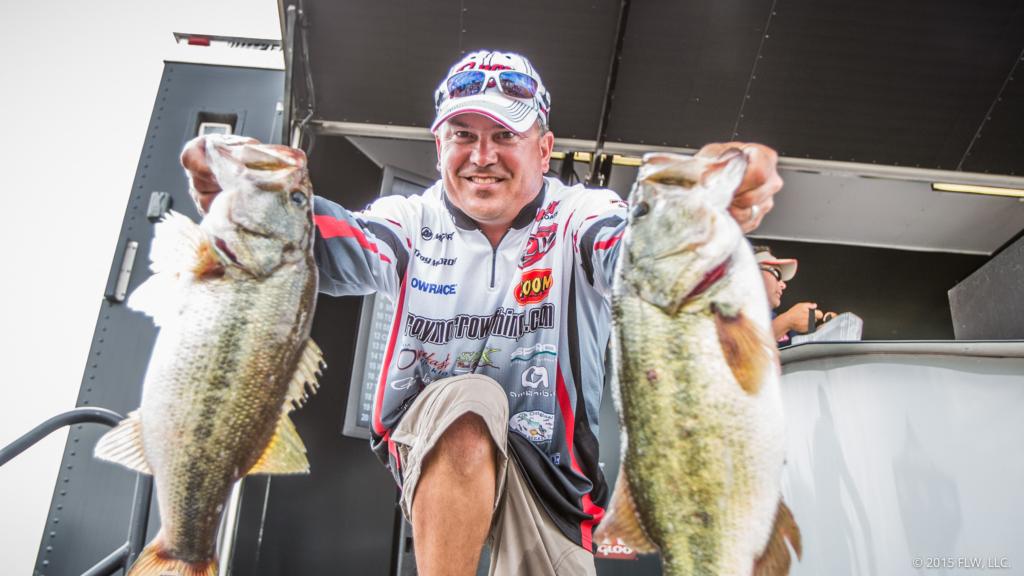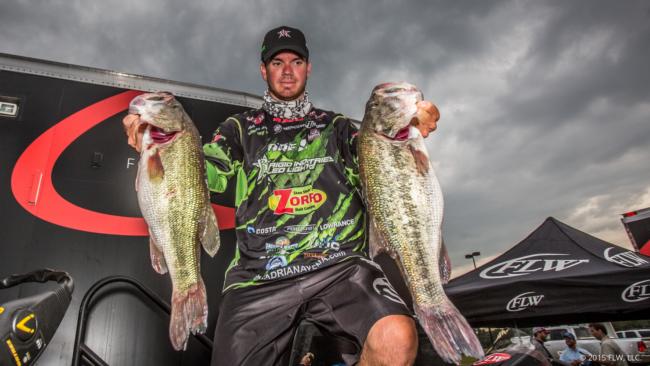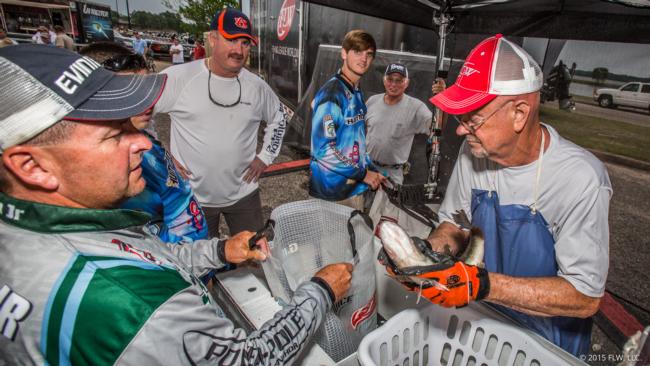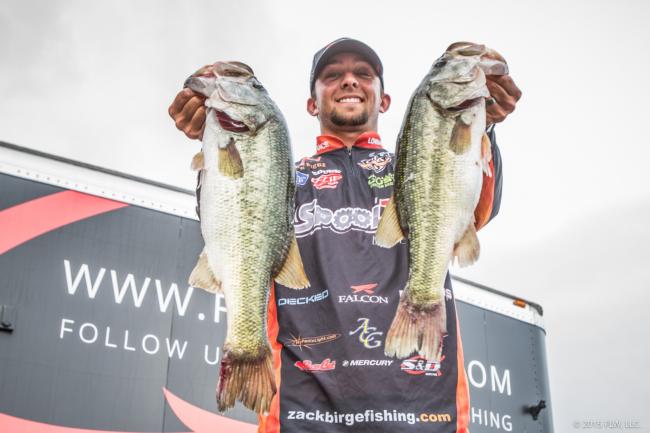Top 5 Patterns from Lake Eufaula Day 1
The "numbers game" on isolated cover dominates the top of the standings

Clent Davis, the day-one leader of the Walmart FLW Tour event presented by Quaker State on Lake Eufaula, described his fishing methodology as being a “numbers game.” He’s hitting as many isolated pieces of offshore cover as possible in a single day. Some of the other leaders behind him used similar terminology to describe their fishing.
Here’s how the rest of the top five got it done today.
2. Troy Morrow – Eastanollee, Ga. – 21 pounds, 8 ounces
Day-one runner-up Troy Morrow brought 21 pounds, 8 ounces to the scale today fishing with a similar strategy as Davis used.
“I probably hit 25 places out of the 150 I’ve located and caught maybe 15 or 20 keepers,” Morrow says. “I pull up to each one and make about 10 casts, then I’m gone. Or if a small one bites it on the first cast, I’m gone. I’m looking for a big bite on the first cast or two.”
Morrow shed a little more light on the isolated cover pattern, saying the fish have not made it out to the true river ledges yet.
“They haven’t quite gone that deep,” he says. “The ones I’m trying to catch are staging on single pieces of cover in the flats – a brush pile, a big stump, a rock, a sunken log – it doesn’t really matter. They leave the bank and head for the main river. But they kind of filter out there, stopping at those little places along the way.”
Morrow put in four long days of pre-practice on Eufaula, spending a lot of time scanning flats for cover. Once he located a piece, he probed it with a MarCum underwater camera to see what it was and what was living there.
“I found some interesting things,” Morrow says, “including how different species of fish use the cover differently. I ended up marking the ones I felt had the most potential, and those are the ones I kept in my Lowrance units.”
3. Adrian Avena – Vineland, N.J. – 20 pounds, 10 ounces
Consider Adrian Avena in the “running the numbers” category as well. His reported 60 stops today yielded 12 keepers that worked up to 20 pounds, 10 ounces. He says he averaged six to eight casts per spot.
“There are fish on most all that stuff we are fishing,” Avena says. “When I graph them, you can see the fish. They might not all be bass, but the brush piles are loaded with fish. For me, the fewer fish I see in a pile, the better my chances of catching a big one. Also, it seems to me that the biggest ones bite first. So if I catch a small one or two, I leave.
“I see these piles as staging spots as they move out to the main river,” he adds. “Everything I’m fishing is in the flats or secondary channels leading to the main river. They’re almost like in-between types of places.”
3. Ramie Colson Jr. – Cadiz, Ky. – 20 pounds, 10 ounces
Ramie Colson Jr. is the only angler in the top five who did not employ a run-and-gun, multiple-stop program. Instead, he used a more traditional ledge-fishing manner by grinding back and forth along a 75-yard-long break.
“I’d go up it with one lure, catch a couple, then go back down it with another lure and catch a couple,” he says. “But most of my action tapered off after about 10 o’clock, so I’m going to run some other stuff tomorrow.”
5. Zack Birge – Blanchard, Okla. – 19 pounds, 13 ounces
Now back to the numbers program – Zack Birge ran eight to 10 of his brush piles today for a 19-pound, 13-ounce catch.
Birge says he only has about 15 key brush piles that he found during practice, but he was very selective on the ones he waypointed.
“I nearly fell asleep out there side-scanning for piles,” Birge says. “There are a lot out there, but I only marked the ones that I thought were the freshest, based on how they looked, how many fish were around them and how they felt when I threw a lure in them.”
Birge also fished and then revisited three of his marked brush piles today and caught better fish the second time around.
“There are a lot of fish around these piles,” he explains. “I can see them all around the brush on a graph. I think when I catch one or two, it disrupts the school. If I catch a fish off one, I try to let it settle down for at least a couple of hours before I go back and try it again.”


